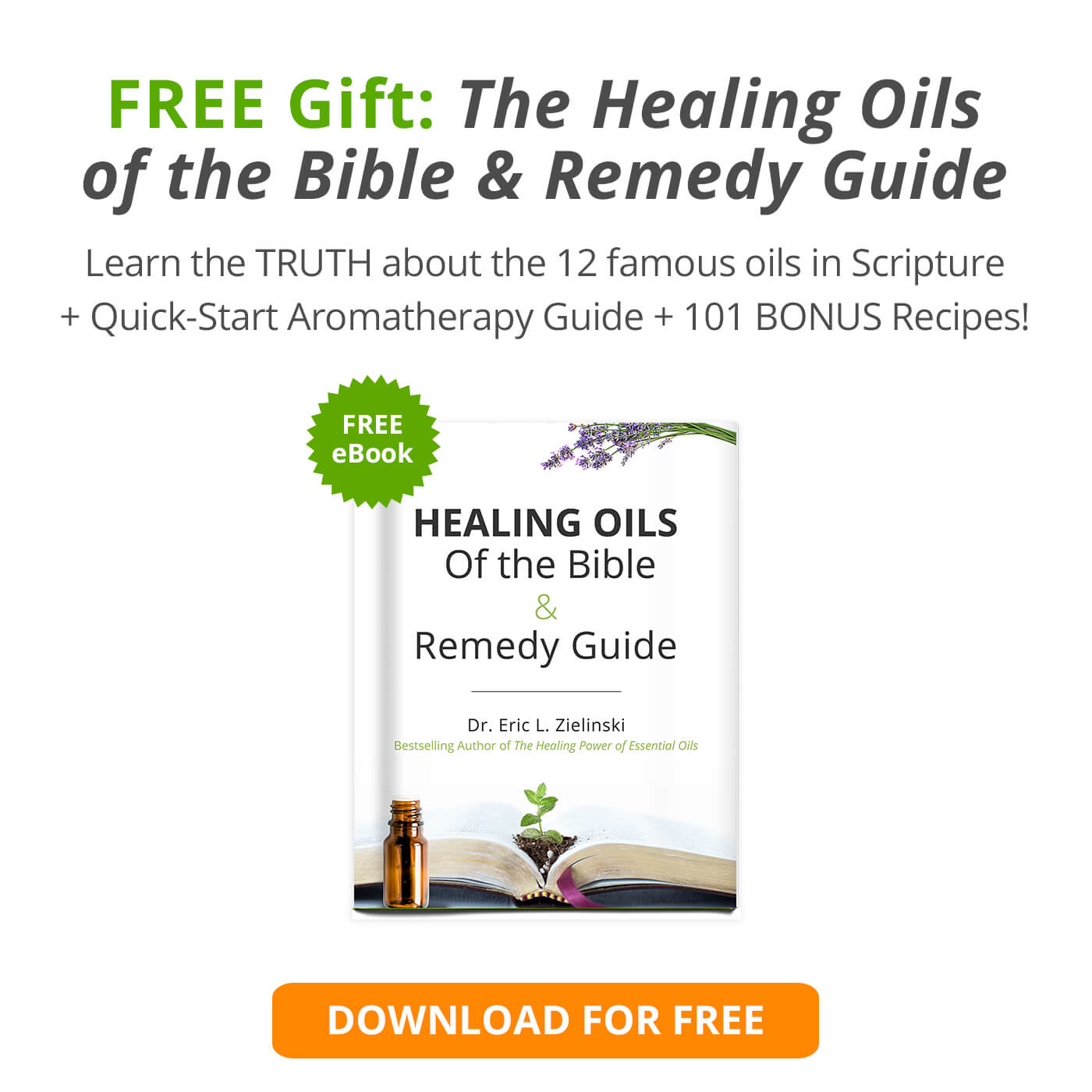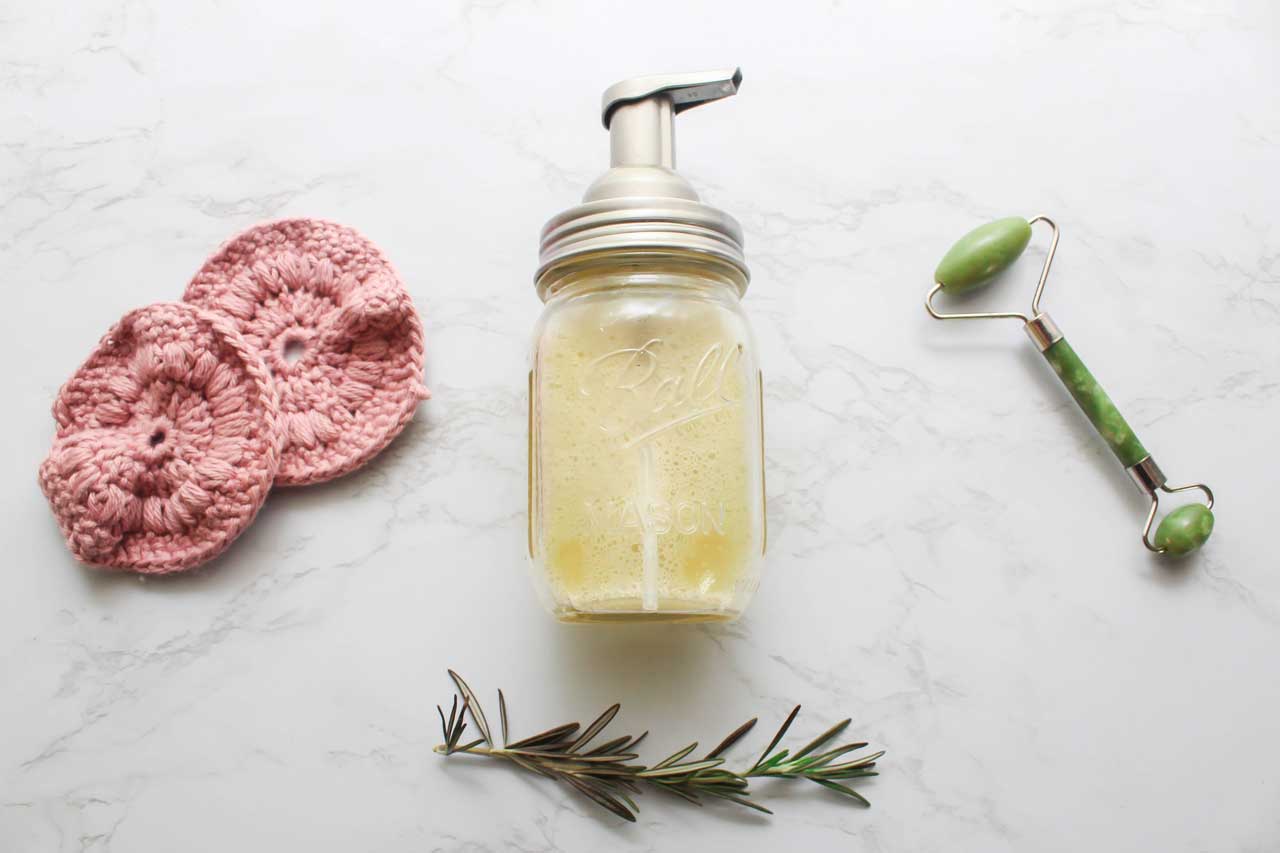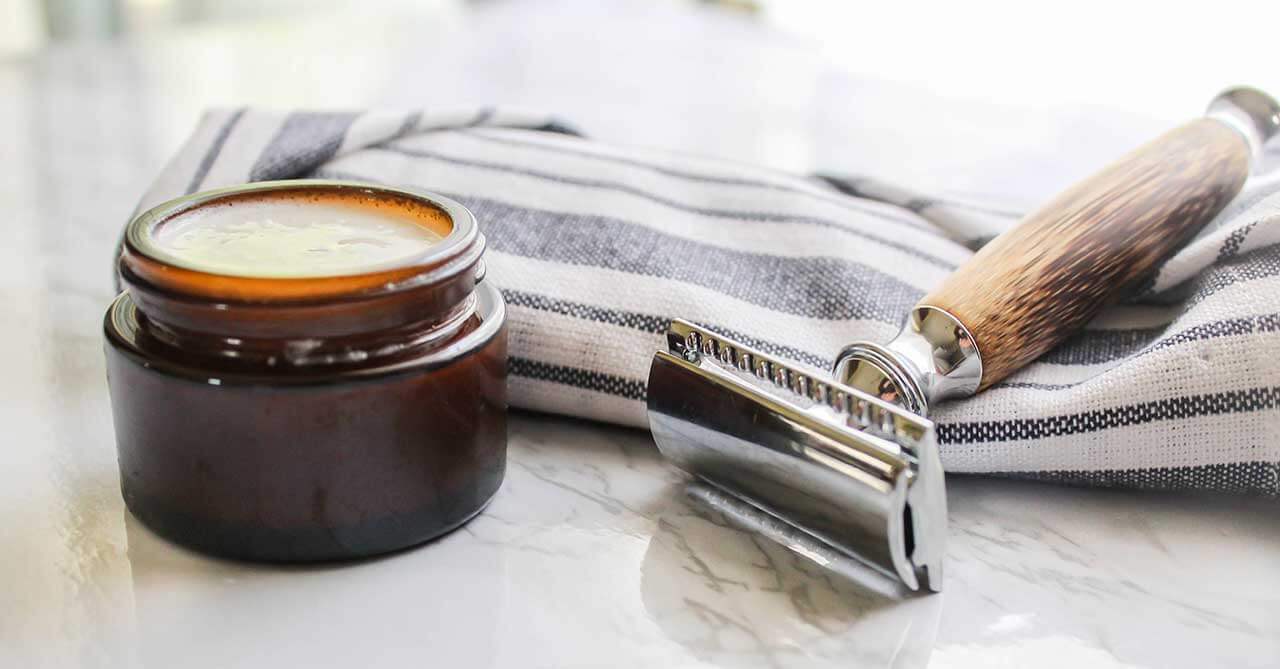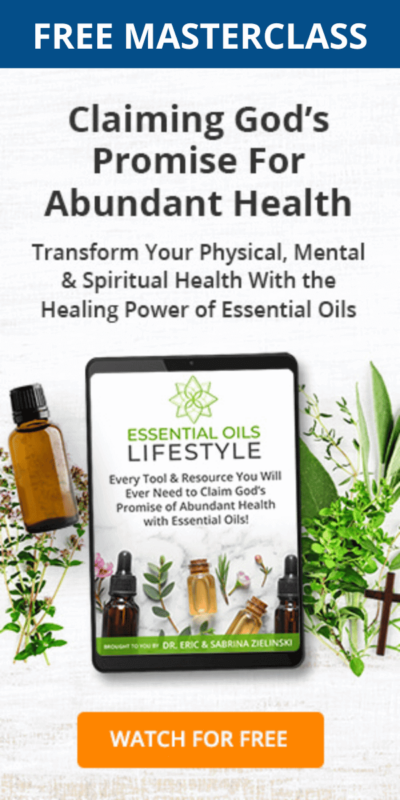Bath bombs are all the rage. You can find them almost everywhere, and there’s even an entire store devoted to creating unique bath bombs. Both kids and adults love them! If you want to experience the joy of a bath bomb without any toxins, try our homemade bath bomb recipe that includes essential oils. You’re in for a treat!
Table of Contents
3 Dangers of Drugstore Bath Bombs
Before we dive into the three dangers of conventional bath bomb, here are three fun facts:
- Bath bombs were created in 1989 by the co-founder of Lush cosmetics. (1)
- Rumor has it that Alka-Seltzer inspired her to create a product that fizzes in the bathtub!
- Bath bombs fizz because of a reaction between citric acid and baking soda.
Bath bombs have increased in popularity, and many brands have created their own version. You can find a bath bomb in nearly any color or scent! In my opinion, bath products are one of the first things you should swap for clean options. Toxins linger on the skin, and long, luxurious baths allow chemicals to have more time to enter your system. Here are just a few dangers of drugstore bath bombs compared to our safe, natural homemade bath bomb recipe.
1. Synthetic Fragrances and Dyes
Many bath bombs on the shelves contain synthetic fragrances and dyes. Companies don’t have to tell you just what chemicals they use in their scent, so you never get the complete picture. (2) The FDA believes that holding companies accountable in this area will reveal their “secret formula,” so manufacturers could be putting virtually anything in their products.
A central selling point of bath bombs is the brilliant shades they color your bathwater. These vivid colors are created with toxic dyes. While sitting in the tub, these dyes can easily be absorbed into your skin and bloodstream. (3) Synthetic dyes are connected to behavioral problems in children, among other issues. (4) One fun bath isn’t worth long-term consequences! Essential oils create a relaxing, luxurious aromatherapy experience without any adverse reactions.
2. Talc
Talc is a critical ingredient in most bath bombs because it helps soak up excess moisture and creates a firmer result. Talc has been linked to a heightened risk of ovarian cancer, especially if it’s allowed to flow freely around intimate areas. The International Agency for Research on Cancer has fully classified this ingredient as carcinogenic or, in simpler terms, something with the ability to cause cancer. (5)
3. Parabens
Parabens help preserve beauty products. Ironically, they do everything but preserve your endocrine system! You can find parabens in most women’s products, which is odd considering their harmful to a woman’s unique genetic makeup. Parabens are known to disrupt hormones and affect the reproductive system. They’ve also been found in women who have breast cancer, leading researchers to conclude they may affect your chances of getting cancer. (6)
How to Relax Naturally
I’m sure all of this information was enough to make you rethink your choice of bath products. Don’t worry; I’ve created an all-natural bath bomb you can use in place of your old stand-by. Bonus: You don’t have to give up the delightful fizz, scent, or color!
Our homes should be a place of shalom, or peace. After traveling, I always feel a sense of relief and comfort coming home. I know my home is a toxin-free haven and my sanctuary! My homemade bath bomb recipe is a large part of my relaxation routine. Here are some tips to help you make the most of your bath.
- Purchase a Himalayan salt lamp! It gives your bathroom a cozy glow and is excellent for purifying the air.
- Meditate on Scriptures that speak about anxiety and stress. Speaking God’s Word changes your mindset and can instantly boost your spirit.
- Invest in a quality towel and washcloth set. There’s nothing better than drying off with a warm, fluffy towel.
- Create a playlist just for soaking. I like listening to classical, worship, and jazz music. I also love Wholetones healing frequency music. The frequencies in these songs can help with insomnia, calm your mind, energize you, and so much more. They’re a staple in our home!
9 Essential Oil Blends for Baths
This DIY recipe calls for 45 drops of essential oils. You can customize the scent to your liking, but I highly recommend going with the relaxation theme. Here are some great essential oil blends that can help you chill out.
Favorite Blends:
- Joyful Blend – orange and vanilla in equal parts
- Valentine’s Blend – 3 parts Orange, 2 parts lavender and vanilla, 1 parts geranium
- Passion Blend – 3 parts lavender, 2 parts jasmine and patchouli, 1 parts sandalwood, orange, and ylang-ylang
- Focus Blend – equal parts Hawaiin sandalwood, Indian sandalwood, patchouli, frankincense, lime, ylang-ylang
- Get ‘er Done – equal parts peppermint, vetiver, frankincense, and orange
- Stink No More – equal parts peppermint and cilantro
- Fall Leaves – 2 parts frankincense, 1 part pine, and cedarwood
- Holy Night – 3 parts white fir and orange, 2 parts bergamot, 1 part peppermint
- Forever Young – 1 part frankincense, sandalwood, lavender, myrrh, and rose (optional)
Best Natural Bath Ingredients
Besides ingredients, you’ll need a spray bottle and metal bath bomb molds to make this recipe. You may be surprised to learn that most of the ingredients in this DIY are on your grocery store shelf!
Epsom Salt: This ingredient is found in any big-box store’s medicine or bath product section. Epsom salt is full of magnesium, which helps the body detox. (7)
Cornstarch: Talc is out, but our bath bombs still need a thickening agent. Cornstarch is a great substitute, and it creates the perfect texture.
Baking Soda: Baking soda is a budget-friendly ingredient that helps the bath bombs to have just the right amount of fizz.
Citric Acid: While once hard to find, citric acid is now located near the canning supplies at your local grocery store. When combined with baking soda, it creates a science experiment-worthy reaction!
Essential Oils: Relaxing essential oils are the icing on the cake! They allow us to get creative with this recipe and create a memorable aromatherapy experience.
Almond Oil: This is a great natural moisturizer! I love using almond oil because it gives your skin a hydrated feel that’s not greasy.
Natural Food Coloring: I recommend using ColorKitchen’s brand of food coloring. Their vibrant colors come from turmeric, spirulina, and beets!
Fantastic Bath Bomb Recipe
This recipe is so much fun to make! This is a great recipe to involve kids in, so don’t be afraid to let them get their little hands messy.
- 1 cup Epsom salt
- 1 cup cornstarch (non-GMO, organic)
- 2 cups baking soda
- 1 cup citric acid
- 45 drops essential oils*
- 5 tablespoons almond oil
- Natural food coloring
- Mix the Epsom salt, corn starch, baking soda, and citric acid in a large bowl.
- Add almond oil and essential oils and gently mix by hand. If you have sensitive skin, wear gloves during this step.
- Once the ingredients are combined, lightly mist with water from the spray bottle and mix. Do not add too much water all at once, or it will get too soggy - that's why I recommend using a spray bottle. You'll need to do this step several times until the mixture reaches a molding consistency.
- Stop adding water when the mixture holds together.
- Separate the mixture into smaller bowls, one for each color you plan on using. Add 5 drops of coloring, mix, and add more food coloring if needed.
- Respray a little mist to ensure hold.
- Press the mixture into your bath bomb mold. Overfill each side of your molds. This is the fun part! Get creative and mix some colors if you desire.
- Press your molds together until you hear a click.
- Remove the bath bombs from the mold and let set overnight before use.
- Store in an airtight container for up to two weeks.
- Now time for a bath!
Some essential oils are hot and would not be suitable for application on the skin like this, such as cinnamon or wintergreen. Others, such as lemongrass, have a lower dermal limit, so you'd want to use less than 45 drops. Also, remember when using an essential oil that causes photosensitivity, you should avoid being outdoors in sunlight for the next day. (14)
Step One: Whisk Dry Ingredients
Whisk the Epsom salt, corn starch, baking soda, and citric acid in a large bowl.
Step Two: Add Oils
Add the almond oil and essential oils and gently mix by hand. If you have sensitive skin, wear gloves during this step.
Safety Tip: Some essential oils, like cinnamon or wintergreen, are hot and unsuitable for application on the skin. Others, such as lemongrass, have a lower dermal limit, so you’d want to use less than 45 drops. Also, remember when using an essential oil that causes photosensitivity, you should avoid being outdoors in sunlight for the next day.
Step Three: Mist with Water
Once your mixture is combined, using the spray bottle, lightly mist with water and mix. Don’t add too much water at once, or your mixture will be too watery. You will repeat this step a few times until you reach the right consistency.
Continue misting and mixing until your mixture holds together. Don’t add additional water once it reaches this point.
Step Four: Add Color
Here comes the fun part! Divide the mixture into smaller bowls, one for each color you choose.
Start by adding five drops of coloring and gently mix. If your mixture is drying out, lightly spray and combine until it holds together again. Add more food coloring if needed.
Step Five: Fill the Molds
Place the mixture in your bath bomb mold. Overfill each side of your molds. If you’re feeling extra creative, you can mix colors! Firmly close your molds until you hear a click. Remove the bath bombs from the mold and dry overnight before using them. Store in an airtight container for up to 2 weeks. Use as needed!
- https://en.wikipedia.org/wiki/Bath_bomb
- https://www.fda.gov/cosmetics/cosmetics-labeling/trade-secret-ingredients
- https://pubmed.ncbi.nlm.nih.gov/23127598/
- https://pubmed.ncbi.nlm.nih.gov/24037921/
- https://www.cancer.org/cancer/cancer-causes/talcum-powder-and-cancer.html
- https://www.bcpp.org/resource/parabens/
- https://www.ncbi.nlm.nih.gov/pmc/articles/PMC5579607/













